TRUE CONFESSIONS OF AN AIR-FILTER ABUSER
 This is why motocross bikes need air filters.
This is why motocross bikes need air filters.
By John Basher
Count me among the legion of ignorant and apathetic souls without an inkling or understanding of the importance of air filtration. I mean, come on, who really ponders their air filter for longer than the life span of a mayfly? I know that the only time I study the condition of my air filter is when I’m trying to deem whether it is good enough to ride with. I cannot lie. Much like the latest rock stars’ drug habit, I don’t strictly adhere to the policys set forth by the filter police. Sure, I’m aware of the generally accepted ideas about air filters:
(1) It’s made of foam.
(2) It needs to be oiled.
(3) It should be changed on a regular basis.
(4) A dirty filter hinders engine performance.
I’m no scientist, and I’m certainly not an engineer, so I can be comfortably clueless and lazily indifferent about my lack of knowledge on air filters. Hence, I bestow upon myself the labels of “ignorant” and “apathetic.”
In an effort to expand my knowledge and pass on the value of air-filter technology to MXA readers, I jetted over to the preeminent motocross air-filter country—the Netherlands. There I spent a long internship under the watchful eye of Twin Air owner Klaas Biermann and U.S. importer Jeremy Garges. Why did I agree to work on the assembly line at an Dutch air filter factory? In all honesty, I wanted to see a faraway place, experience the Dutch culture, cross another country off my bucket list, figure out why people there are Dutch but live in Holland and call it the Netherlands and, in the meantime, I could learn about air filters.
Truth be told, air filters were the last thing on my mind. I figured that the joke was on Twin Air. I thought about the iconic windmills, walking along the Zuiderzee, shopping in historic Amsterdam, drinking sparkling water and having a free vacation while my fellow MXA teammates were back home working for a living. Surprise! After spending several days in the Netherlands, I realized that I didn’t know squat about air filtration. I bet that you don’t, either. It took a trip halfway across the globe, a tour of a foam manufacturing plant and a couple days at Twin Air’s in-house production facility for my eyes to be opened. I was embarrassed by my stupidity and dedicated myself to becoming an air-filter expert.
Ain’t life strange? I went to the Netherlands deaf, dumb and blind (okay, maybe just deaf and dumb). A few short days later, I left as a knowledgeable advocate of air filtration. Which is why, like all true believers, I feel obligated to pass my education on to you.
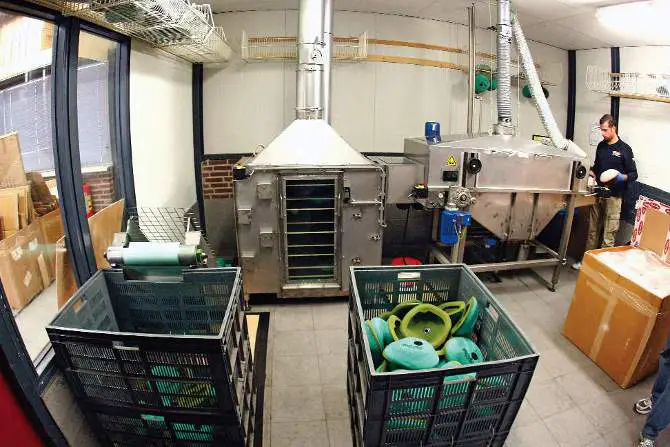
This is the machine that automatically oils a Twin Air filter so that some poor sap, like you and I, don’t have to squeeze it in.
THE RISE OF FOAM
You didn’t think that foam was something that came out of thin air, did you? Actually, if you thought that was true, then you’d be half right. Polyurethane foam is a man-made product, formed by combining a complex formulation of polyester polyols with water and isocyanates. Essentially, chemicals are added together in a liquid formula. Then, they are sprayed out of a mixing head. A chemical reaction occurs almost immediately between the mixture and thin air (oxygen), leading to a rise in foam material. The whole process takes place in seconds and is quite amazing. A foam manufacturer, such as the one that Twin Air uses exclusively, can pump out a 200-foot-long block of foam that weighs 882 pounds. Twin Air requires a flame-retardant chemical on many of their air filters, such as with four-strokes. This additive is included in the mixing head before the foam is produced, meaning that the flame retardant is bound directly into the foam. This is a seamless process that makes it much easier than spraying on the additive later on the production line.
HOW AN AIR FILTER IS MADE
After the foam has rested for some time, the long block is placed in a large cutting machine, where it is rounded and glued together from beginning to end (creating a circle the size of a warehouse). Layer by layer the machine cuts the foam into large rolls. Once the process is complete, the rolls are sent to be reticulated (more on that later). Upon completion, the different foams are bonded together by flame. This is apparent when you inspect a Twin Air filter, which has two different plies of foam mated to one another (a white outer layer and orange inner layer). Then, the foam is cut into sheets and sent to Twin Air’s processing facility (housed inside their Veghel, Netherlands, building).
Once transported, Twin Air die-cuts the foam using an assortment of molds to punch out the required foam pieces for air-filter production. It’s interesting to note that Twin Air has molds to build filters for over 1500 different model motorcycles dating back to 1965. Impressive! They also have several copies of each mold, just in case the facility burns down or a windmill blows over into the factory. The molds are priceless and irreplaceable if lost, which is why Twin Air backs up their work.

Once the required pieces of the filter have been die-cut (the base of the filter, the middle section and the top piece), they are sent to the gluing area. Using a spray nozzle, a worker distributes a specific amount of glue to the proper areas. Once the glue has dried for the secret amount of time (it turns out that there are a lot of secrets in the air-filter business), the parts are passed on to the assemblers. Every Twin Air filter is handmade.
During my internship on the assembly line, where they tried to pay me in something called “Euros,” Twin Air challenged me to build one air filter from scratch (maybe I shouldn’t have bragged about how easy it looked). It was tedious. It was a tiresome chore that required fierce concentration. I managed to piece everything in place, but I suffered thumb pump from squeezing the plies of foam together. Needless to say, “Air Filter Assembly Expert” won’t be found on my resume.
MINE BARELY PASSED
After the air filter has been checked and cross-checked for accuracy and proper construction (mine barely passed), it’s either sent to the oiling area or put in the packaging bin. The most mind-blowing part of the process was seeing Twin Air’s custom-built air-filter oiling station. Using a conveyer belt, it can crank out a perfectly oiled air filter in less time than it would take to remove a dirty filter from a bike. The oil station could incrementally add or subtract the amount of oil it used by turning a dial; to check the oiling, they randomly weigh filters to make sure that they are using the correct amount. Genius! Twin Air started selling pre-oiled filters in 2005. They are very popular with the MXA wrecking crew (how would a clean and perfectly oiled air filter not be a hit?). However, most people still prefer buying dry (non-oiled) air filters, which is why dry filters account for 80 percent of Twin Air’s filter sales.
Dry or oiled, the filter is placed in a plastic package, sealed for delivery and placed in a box for transport. The whole process of making a single air filter takes less than 10 minutes. Of course, Twin Air doesn’t simply make one filter at a time, opting for an assembly line process. Theoretically, Twin Air pumps out hundreds of filters a day from their multiple facilities.
THE DEBATE: POLYESTER VS. POLYETHER
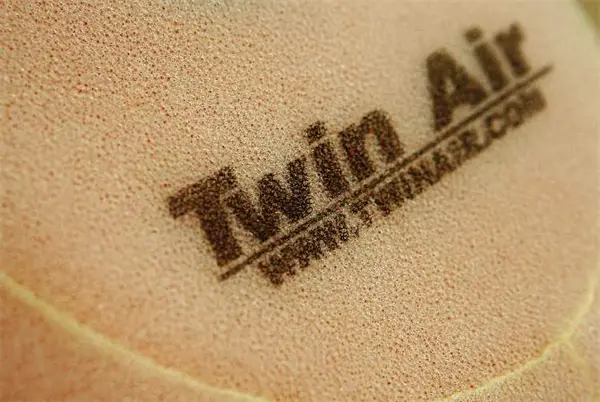
There are two different types of foam.
Who knew that there were two different types of foam? Not me. I didn’t know polyester from polyether until I worked on the production line at Twin Air.
Polyester foam has a higher tensile strength than polyether foam. It is more resistant to hydrocarbons and alcohols. It is common knowledge in the foam world that polyurethane should be used in applications where the foam comes into contact with oxygen. Polyester restricts water from entering through the material. Conversely, polyether foam should be used in liquid-based solutions (e.g., water filters for an aquarium) and is also utilized for mattress production (since polyether foam returns to its original shape).
Polyester is also more costly and difficult to manufacture. Having a higher viscosity rate, polyester foam has physical properties that aren’t obtainable with other types of polyurethane foam. These properties include superior solvency, abrasion and cut-resistance. Twin Air uses polyester foam for all of the aforementioned reasons, but also for further property benefits. The structure of polyester foam can be made much more equally. Equal air filtration is important; otherwise, the filter can break down and be rendered useless in short order (as quickly as 30 minutes).
WHAT IN THE WORLD IS RETICULATION?
Reticulation is a process whereby a roll or block of foam is placed in a large airtight chamber (called a “zapper”). The air is evacuated from the chamber and replaced with an explosive gas mixture that the foam soaks up. When the chamber is full and attains consistent pressure, the operator of the zapper ignites the mixture via a switchboard. A controlled flame passes through the foam, melting the window membranes, which, before reticulation, gives the foam pores a shine that’s visible to the naked eye—and leaving the skeletal structure intact.
Reticulating the foam leads to smooth and polished cells. Doing so provides a greater propensity for equal airflow (a must in air filtration). In essence, reticulation opens up the foam pores and allows air to flow more consistently through the foam; otherwise, the foam might as well be used for packaging material.

A special textile-style cutting tool is often used to cut the foam into the required shapes.
We at AC Repair Dubai (https://acrepairdubai.ae) Air Condition Systems (LLC) accept that ‘Nothing is Impossible’. This certainty originates from the undertakings of our skillful workers behind us who, as a matter of course, endeavor to convey brief and quality administrations. All together, we accept that constant improvement in the serious market is a main impetus behind our prosperity that has consistently kept us roused to improve.
THE DOS AND DON’TS OF AIR-FILTER MAINTENANCE
I have never followed a strict protocol when it came time to put a fresh air filter in my bike. Insolence! Unlike a baby, an air filter won’t tell you when it needs to be changed. You must inspect the filter and determine which course of action to take. If the filter shows signs of filth, swap it out. If there is damage to the filter, swap it out. If the filter is wet from moisture, swap it out. During my time at Twin Air, where I matriculated in reticulation, I learned that unless the air filter in your bike is pristine, you need to swap it.
And what about properly cleaning an air filter? There’s only one way to truly do the deed. Let these be the standards by which you make your potentially critical decision.
DO: Always oil an air filter. Oil is designed to trap harmful dirt particles that could enter the engine. Believe it or not, an oiled filter also allows more air to pass through than a dry, non-oiled filter.
DON’T: Don’t use gasoline to clean an air filter. Gasoline hardens up the glue seams on the filter, which makes the foam pull apart. This leads to premature filter deterioration. A high-quality air filter should last over 30 wash cycles if cleaned properly. Using gasoline drastically shortens the life of the air filter.
DO: Make sure to oil your air filter sufficiently. Submerge the filter completely, squeeze out the excess oil and let the filter air-dry for a minimum of 12 hours. Lay the filter flat with the logo facing upward while it dries. After the required time, massage the oil around the filter again to get even coloration on the filter before installing it in the bike.
DON’T: Don’t use an oiled dust-filter cover while riding in extremely wet conditions. The oil from the dust-filter cover will allow water to seep through at a much faster rate than a cover that doesn’t contain oil. This is not to say that you should use a non-oiled air filter in wet conditions. Always use an oiled air filter in every circumstance, and always use an oiled dust-filter cover in sand and silty conditions.
DO: Be gentle when washing an air filter. The small foam particles can break down relatively easily if not cared for. Twin Air recommends using their Bio air-filter kit to clean and oil a foam air filter. Mix 100 milliliters of Bio dirt-remover powder with a clean bucket of extremely hot water. Submerge the dirty filter into the cleaning solution for 15 to 30 minutes. Upon removing the air filter from the solution, squeeze the filter significantly. Fold and squeeze the filter to remove the solution; do not wring out the filter, as it will damage the foam. Use a multipurpose cleaner on any dirty spots on the filter. Rinse the filter under warm water. Again, remove excess water by squeezing the filter. Hang-dry the filter?never use compressed air or a hair dryer to speed up the process?until the filter is dry.
DON’T: Don’t overestimate the value of a clean air filter. The airbox is the modus operandi for air induction into the engine. A seamless flow of air provides maximum horsepower, while a clogged or leaking air filter leads to a hindrance in performance and potential destruction.

Every Twin Air filter is built by hand. Each piece has to be glued together.
DO: Make sure that the air filter and cage are properly fitted to the airbox. Failing to do so leads to improper air filtration and the danger that harmful particles will enter the engine. All it takes is a few particles to blow up your engine, so be careful when installing an air filter.
I WASN’T INFORMED—NOW I AM
I’m not really an expert on air filters. My tutelage taught me how much I didn’t know about air filtration. Before traveling to the Netherlands I was comfortable in my lack of understanding. I confess that I didn’t take the value of cleanliness and apply it to my air filter at all times. Now that I’ve worked at an air-filter factory and drunk the Dutch Kool-Aid, I am reborn as the Pied Piper of foam filters. Now, when I change my air filter, I’ll remember to follow all of the steps that Twin Air has instilled in me. And if you ever rip open a Twin Air package and find a misshapen and crude air filter inside, you’ll know that I made it. You’re welcome!


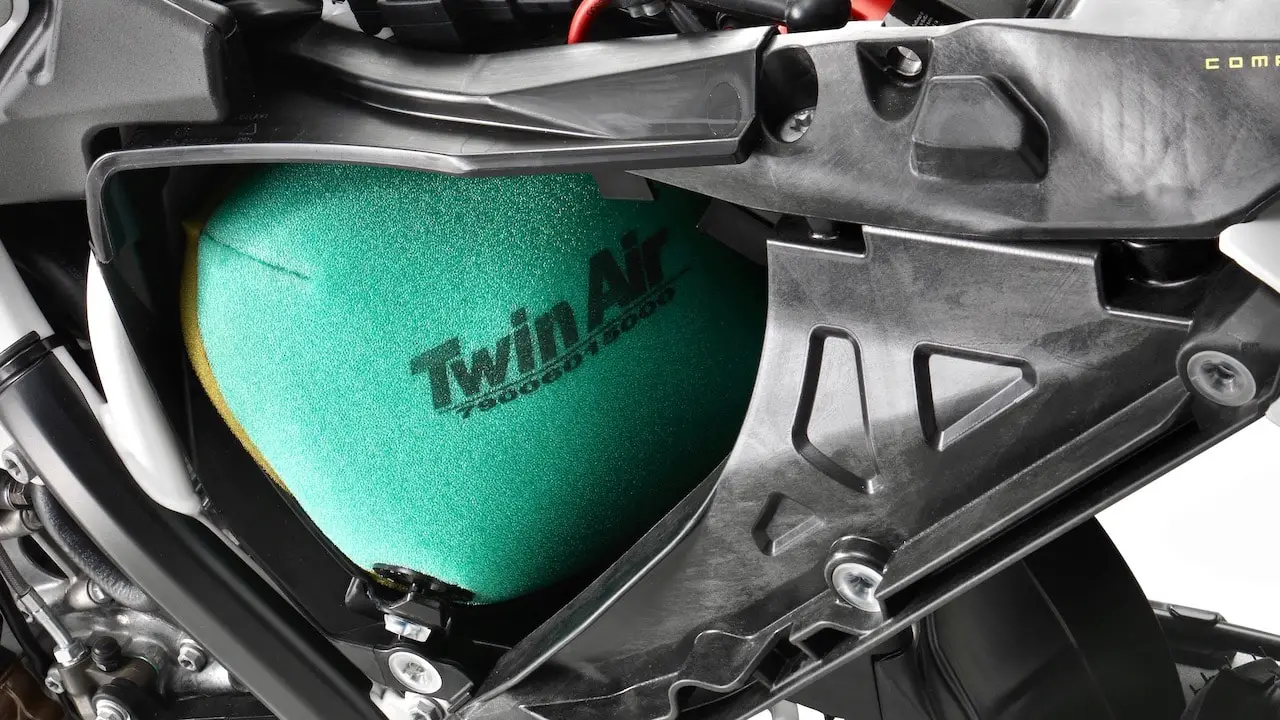
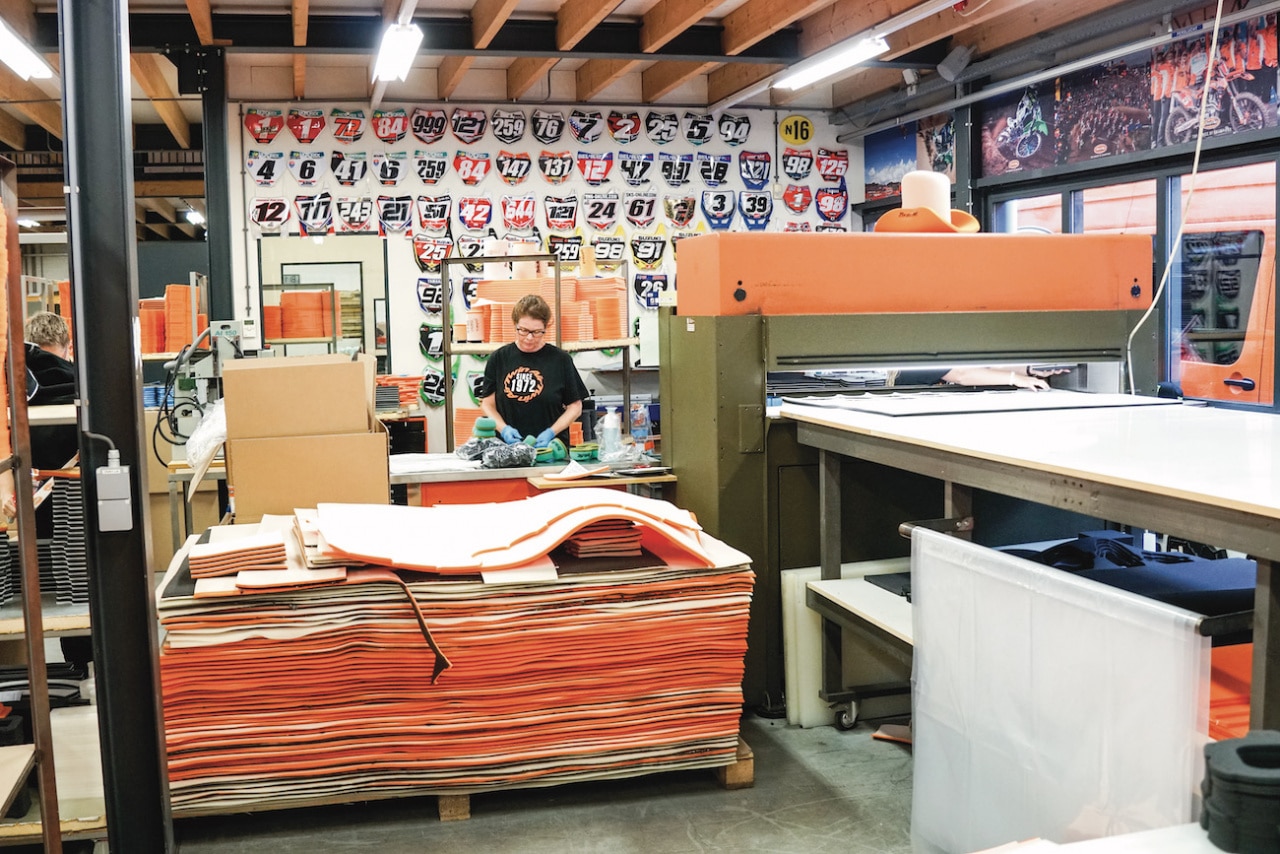
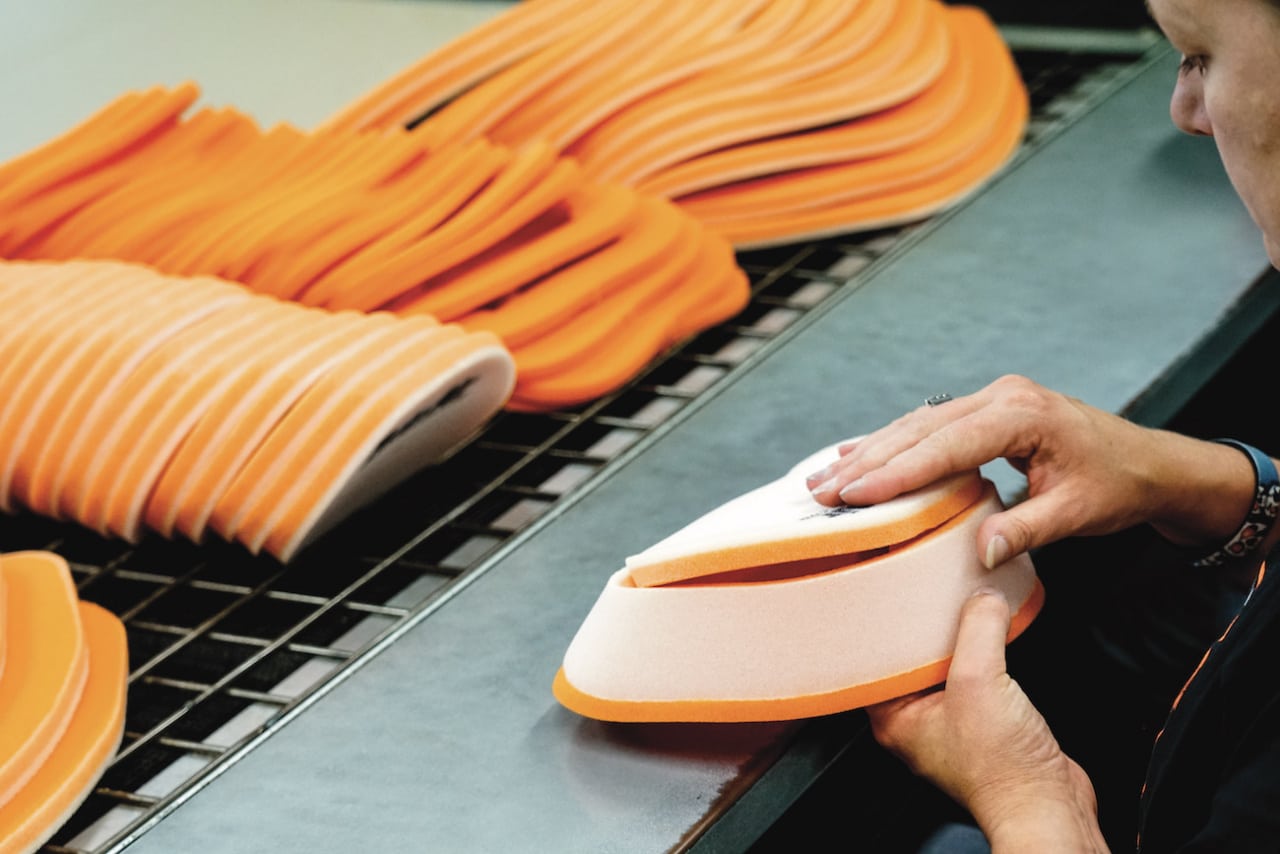
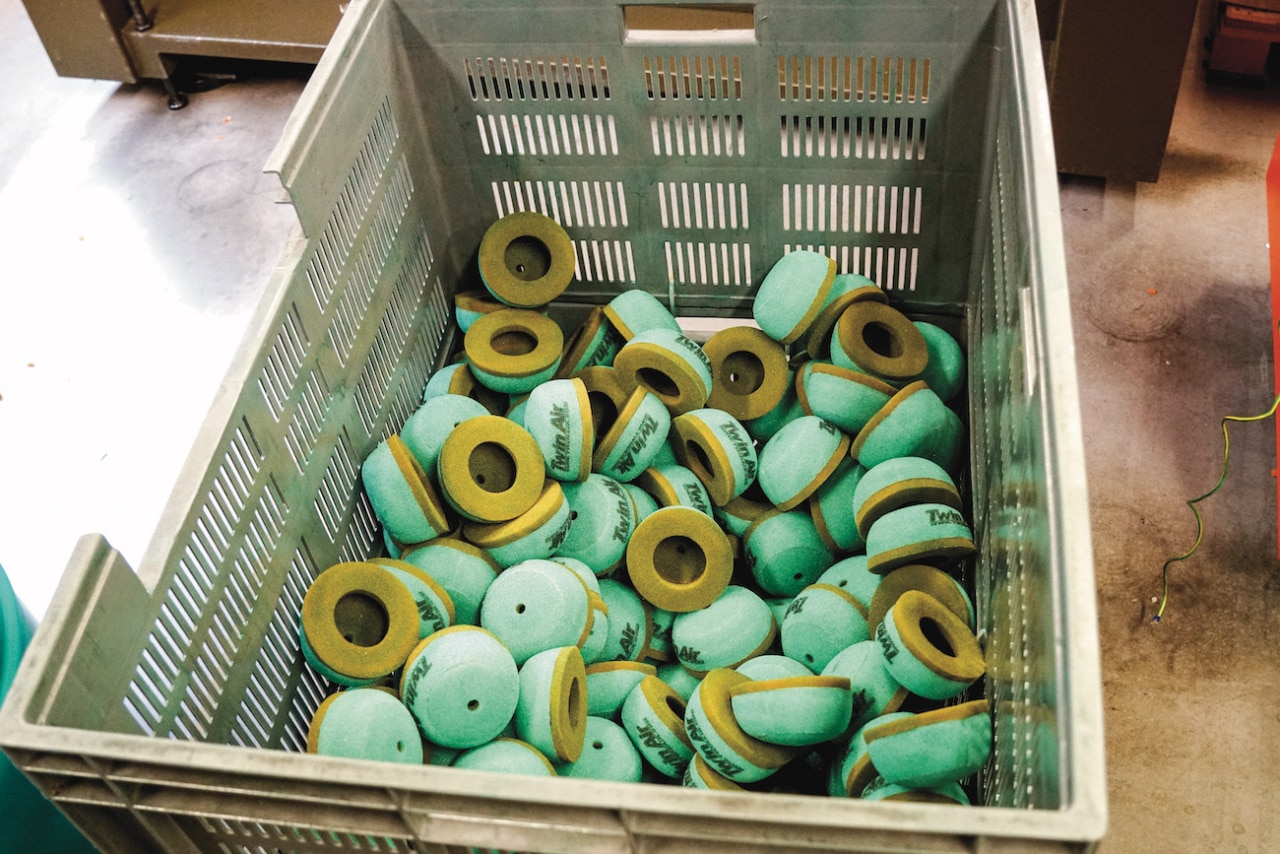


Comments are closed.